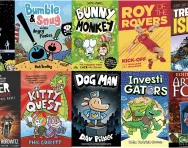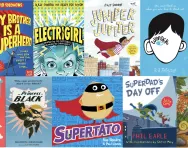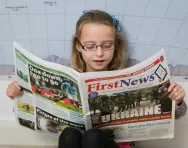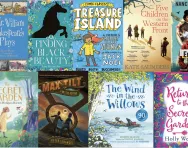Important update from TheSchoolRun
For the past 13 years, TheSchoolRun has been run by a small team of mums working from home, dedicated to providing quality educational resources to primary school parents. Unfortunately, rising supplier costs and falling revenue have made it impossible for us to continue operating, and we’ve had to make the difficult decision to close. The good news: We’ve arranged for another educational provider to take over many of our resources. These will be hosted on a new portal, where the content will be updated and expanded to support your child’s learning.
What this means for subscribers:
- Your subscription is still active, and for now, you can keep using the website as normal — just log in with your usual details to access all our articles and resources*.
- In a few months, all resources will move to the new portal. You’ll continue to have access there until your subscription ends. We’ll send you full details nearer the time.
- As a thank you for your support, we’ll also be sending you 16 primary school eBooks (worth £108.84) to download and keep.
A few changes to be aware of:
- The Learning Journey weekly email has ended, but your child’s plan will still be updated on your dashboard each Monday. Just log in to see the recommended worksheets.
- The 11+ weekly emails have now ended. We sent you all the remaining emails in the series at the end of March — please check your inbox (and spam folder) if you haven’t seen them. You can also follow the full programme here: 11+ Learning Journey.
If you have any questions, please contact us at [email protected]. Thank you for being part of our journey it’s been a privilege to support your family’s learning.
*If you need to reset your password, it will still work as usual. Please check your spam folder if the reset email doesn’t appear in your inbox.
Using comics to improve your child’s literacy

Do you sigh inwardly every time you catch your child with his head buried in a comic, while his ‘proper’ reading books sit gathering dust?
We’re often quick to dismiss comics and graphic novels (comics in book form) as trashy, but far from damaging children’s literacy, they could actually boost it – especially for boys, who tend to underperform compared to girls.
Why kids love comics
Open any comic or graphic novel, and it’s immediately obvious why children love them. Forget dry pages of tightly-packed words; instead, comics burst with colourful pictures alongside small snippets of text, which appeals hugely to children who are visual learners (a common trait among boys).
The subject matter of comics also grabs children’s attention. Typically, stories are packed with action and adventure, feature aspirational characters like superheroes, and use dynamic, engaging language – ‘Boom! Crash! Pow!’ Meanwhile, the visual nature of comics appeals to children who are more familiar with TV and online visual media than with books.

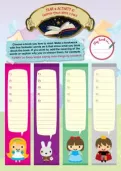
Boost Your Child's Learning Today!
- Start your child on a tailored learning programme
- Get weekly English & maths resources sent direct to your inbox
- Keep your child's learning on track
But it’s not just the combination of bright pictures and few words that draws children in. ‘Comics are intriguing to children not because they are simple, but because they are dynamic,’ says Dr Chris Murray, a comics expert and head of English at the University of Dundee. ‘Not only do they tell exciting adventure stories, but because the individual panels show only fragments of the action, readers have to use their imagination to fill in the gaps. This engages children, and challenges them.’
How comics can improve your child’s literacy
‘Comics don’t harm literacy; they promote it,’ explains Murray. ‘They involve the reader in a complex negotiation of words and images, making logical sense of the narrative and weaving the action together based on the elementary cues in the illustrations.’ This helps children develop a range of important literacy skills, including understanding a sequence of events, discerning a plot and inferring what happens next.
Just like text-based books, comics have a beginning, a middle and an end, main characters, and a story climax. Reading comics can therefore introduce children to concepts of story structure and character development. They can also help children develop an understanding of mood, tone, humour, irony, and so on, and experience a wide range of vocabulary. You can get a good taster of what's out there by signing up for things like Readly, browsing through their selection of comics and magazines and finding out what your child likes best (and what you like too!).
Comics for new or struggling readers
For emergent readers or older children who struggle with literacy, comics are a great confidence-builder. Whereas a page of unbroken words can be daunting (and off-putting), a comic’s bite-size text and the contextual clues provided by the illustrations help children to understand and enjoy the story even if they can’t decipher every word.
Comics often act as a bridge between picture books and full-length books, and because all the action and excitement happens within a few pages, they’re particularly good for motivating boys – who tend to want immediate results from their reading, rather than waiting for a story to develop – to read. This, in turn, can lead them to tackle longer books in an attempt to discover even more exciting stories.
Children can also be inspired by comics. ‘You often see children creating their own comics, in a way that you don’t with other narrative art forms,’ explains Murray. ‘They’re simple to replicate, but the effects that can be achieved on the page can be complex, engaging, and satisfying to young readers.’ Writing captions will also improve your child’s handwriting, spelling, punctuation and grammar, even if the only words used are ‘Kerpow!’ and ‘Take that!’
Perhaps most important, though, is that children are more likely to continue to read as they grow up if they see reading as enjoyable – and what better than a comic for teaching them that reading is fun? In fact, research shows that boys who read comics are more likely to read other text-based material, and say they enjoy reading more. So rather than rolling your eyes at your child’s choice of reading matter, encourage it: after all, if comics lead him to a lifelong love of reading, that can only be a good thing.
Encourage comic-love with our Design your own comic worksheet.
If comic-reading inspires your child to have a go, try a DIY comic activity book.






Great comics and graphic novels for KS1 and KS2
KS1
- The Beano (DC Thomson)
- Asterix by René Goscinny and Albert Uderzo
- Batman Phonics Fun by Lucy Rosen
KS1 / KS2
- The Adventures of Tintin by Herge
- Tiny Titans (DC Comics)
- Illustrated classics by Marcia Williams
KS2
- Diary of a Wimpy Kid by Jeff Kinney
- Polly Price by Dee Shulman
- Amelia Rules! by Jimmy Gownley
- The Loxleys and the War of 1812 by Alan Grant
The Phoenix Comic is a weekly comic for children packed with 100% original material and containing no advertising. Aimed at 8-12 year olds and also available as a digital download.
Classic comic Beano has been entertaining British children since 1938 (you yourself probably have fond memories of the Bash Street Kids, Minnie the Minx, and of course Dennis the Menace!). Certified by the National Literacy Trust for using correct English, it's the nation's favourite comic.




